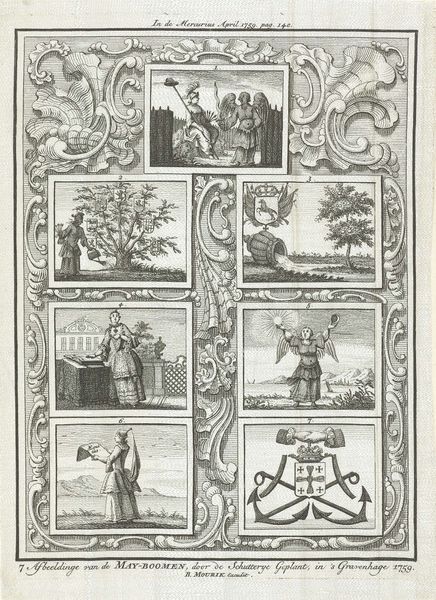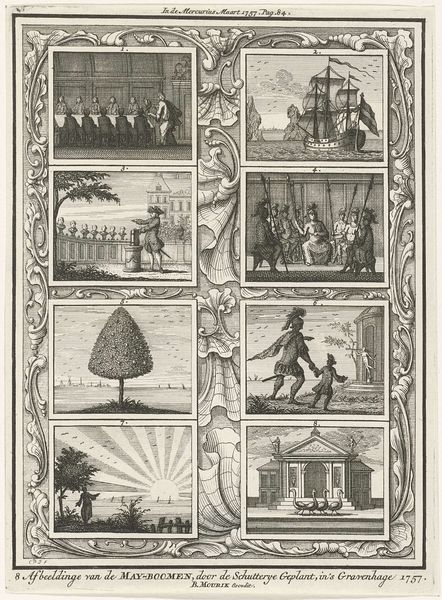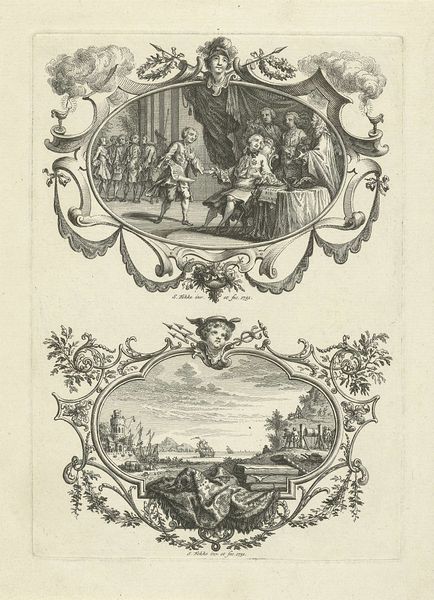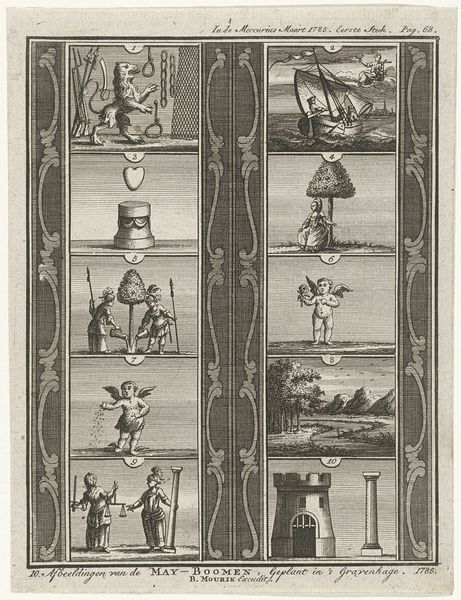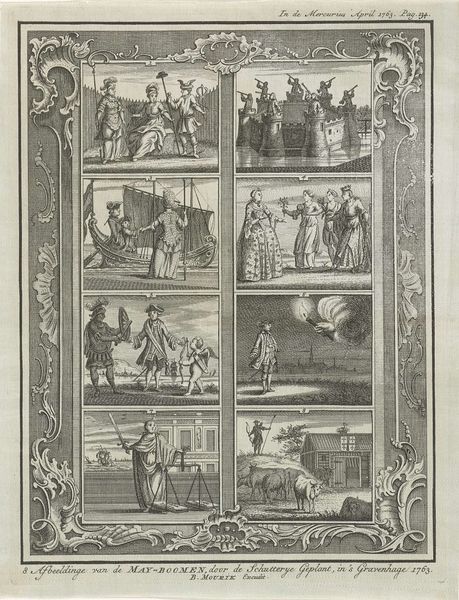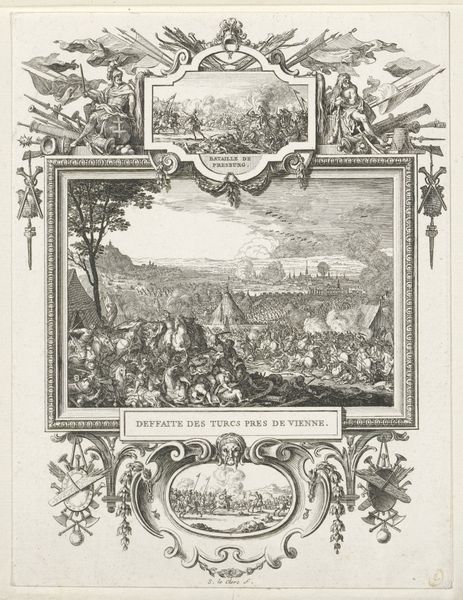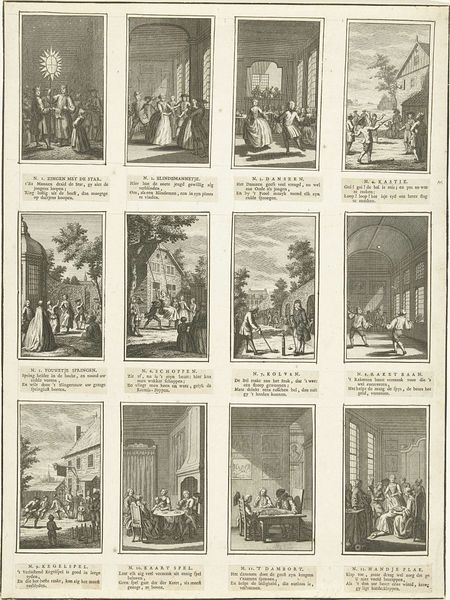
Dimensions: height 182 mm, width 135 mm
Copyright: Rijks Museum: Open Domain
Curator: So, what strikes you about this print, "Meiboom geplant door de Haagse Schutterij, 1765" by Caspar Jacobsz. Philips? Editor: It’s interesting how many different scenes are crammed into one print. It's an engraving, right? It feels very documentary, but also kind of…fanciful. Like, what’s the connection between the guys planting the maypole, and the image of the horse, for instance? What's your take? Curator: I think what we’re seeing is less about a single narrative and more about the context of production – both in terms of the material of the engraving itself, the paper, the ink, the labor of the engraver, and how the ruling classes wanted to showcase the Schutterij or civil guard’s activities. Consider who would have commissioned this print, and for what purpose? It's about constructing an image of power. Editor: So you're saying it's like propaganda, in a way? Highlighting the material processes behind creating an image intended to project civic strength? The physical act of engraving and distributing it amplifies that? Curator: Precisely! And even the choice of scenes, like the ship at sea and the planted May-Boom—it shows dominion and a successful, almost mythical connection to the land. Everything down to the ornamental border is meant to legitimize the power structures of the time, mediated by its material production and circulation. The medium *is* the message, to paraphrase McLuhan. Editor: I hadn't considered the printing process as part of the message itself. It really does seem like choosing to reproduce this on paper, allowing it to be widely disseminated, becomes part of the power dynamic. Curator: Exactly. Examining art through its means of production provides unique insights. Editor: Well, looking at it that way really flips my perspective! I’ll definitely be thinking more about materiality when analyzing art from now on.
Comments
No comments
Be the first to comment and join the conversation on the ultimate creative platform.
